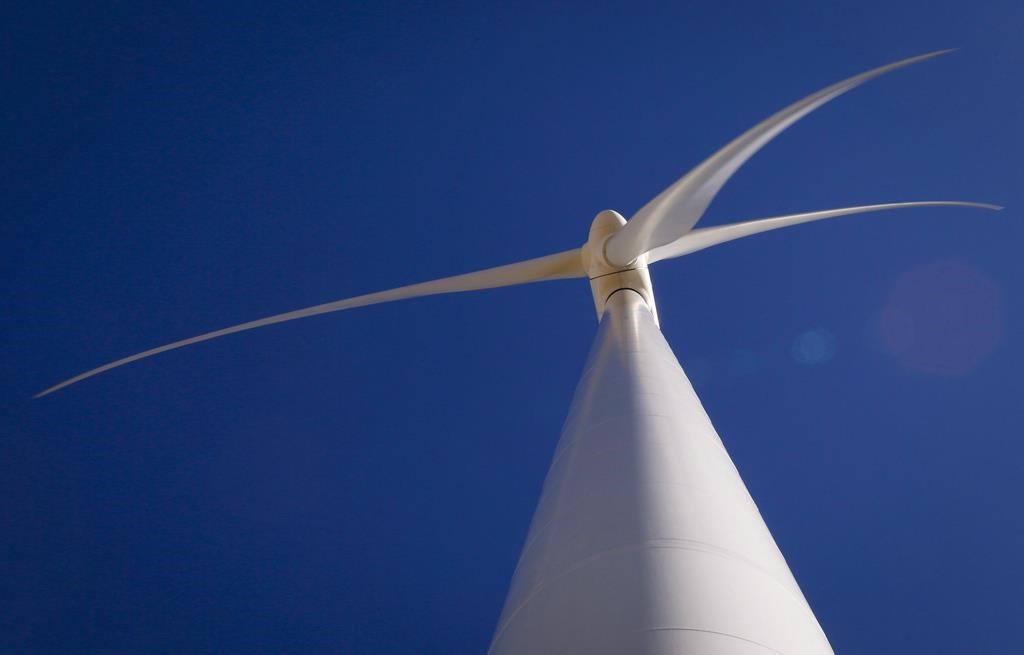-1691761497.jpg)
TFSA (Tax Free Savings Accounts) basics
DD Images / Shutterstock
A Tax-Free Savings Account (TFSA) is a registered account in Canada that allows your savings to grow tax-free. It can be used for any savings goal and withdrawals are tax-exempt, but there's an annual TFSA contribution limit.
With tax season on the horizon, everyone is scrambling to make last-minute RRSP contributions. Opening a Tax-Free Savings Account (TFSA) may not be on your radar — but it should be. If you’re a smart saver, here’s everything you need to know about a TFSA and why you should consider contributing to a TFSA pronto.
What is a TFSA?
Introduced in January 2009, a TFSA is a registered account in Canada that offers special tax benefits. Within a TFSA, you can hold any type of savings or investment account (cash, GICs, mutual funds, stocks and bonds) and any income earned is tax-exempt (even when withdrawn). This means any earnings are compounded tax-free over time. A big win!
Any contributions to TFSAs are done with after-tax income, so unlike RRSPs, you don’t get a tax refund for contributions. However, a big difference is that you can withdraw money from your TFSA at any time, for any reason, without paying a dime in taxes.
For 2022, the annual contribution limit is $6,000. Canadians who were at least 18 years of age in 2009 can have up to $81,500 total in a TFSA.
How does a TFSA work?
Unlike RESP or RRSPs, the TFSA is an all-purpose account. And unlike other registered accounts in Canada, you can spend the money inside your TFSA whenever you want, and on whatever you want. So you can use them to stash your cash for a dream trip or home renovations. However, since your money compounds tax-free inside your TFSA, it’s best used for retirement savings.
There is a lot of confusion about how to tap into the power of the TFSA. For starters, don’t be fooled by the word “savings.” With TFSAs being heavily branded as “savings accounts,” many Canadians don’t realize that they can use them to invest! Ultimately, the TFSA can be used as a powerful investment vehicle, and you can park your investments in a variety of spaces: stocks, bonds, mutual funds, GICs, and so forth (more on this later). Anything earned from your investments within the TFSA is sheltered tax-free – a huge incentive for opening a TFSA investing account.
For some savers, there are times when opening a TFSA savings account vs. a TFSA investing account might make more sense. For instance, if you plan on buying a house or another big-ticket item in the near future, a TFSA savings account might make more sense. It’s a very flexible savings tool that allows you to withdraw money at any time – completely tax-free.
Or if this better suits your situation, open a TFSA savings account with a bank that offers a high-interest rate.
READ MORE: The best TFSA savings accounts in Canada
Summary of TFSA rules
- You must be over 18 years of age to open an account.
- You can contribute up to your TFSA contribution room. As of 2022, $81,500 total for those who were 18 in 2009.
- A tax applies to all contributions exceeding your TFSA contribution room.
- You can withdraw money from your TFSA at any time for any reason, completely tax-free.
- Withdrawals will be added to your TFSA contribution room at the beginning of the following year.
- You can replace the amount of the withdrawal in the same year only if you have available TFSA contribution room.
- Money contributed to TFSAs is done with after-tax income so you don’t get a tax refund for contributions.
- You can hold a number of things within the TFSA. The TFSA is like a basket that you put investments into (GICs, High-Interest Savings Accounts, stocks, bonds etc.).
- Unlike RRSPs, TFSAs do not expire – meaning there’s no requirement to withdraw the funds by a certain age.
- Any unused contribution room can be carried forward to future years.
- The TFSA is best used for investing rather than saving. If you use the TFSA to invest in long-term equities, you can shelter a substantial amount of investment earnings in your TFSA.
How much can I put in my TFSA?
Again, many Canadians get tripped up by the rules around TFSA contribution room limits. If you over-contribute to your TFSA, the Canadian government will charge you a fee of 1% of the over-contribution amount per month until you withdraw it. This makes some savers angry, but stick with us – we’ll help explain the rules so you don’t get dinged.
There are two contribution limits to be aware of: the TFSA annual contribution limit and the TFSA lifetime cumulative limit.
- The TFSA annual contribution limit varies year to year. The maximum amount in 2022 you can contribute to a TFSA saving or investing account is $6,000. In 2015, it was $10,000, and then from 2016 to 2018, it was $5,500. Any unused space in your contribution room can be carried forward to future years. So pay attention to the contribution amounts that the government sets for each year in order to calculate your lifetime contribution limit.
- The TFSA lifetime cumulative limit is the maximum overall amount of cash that you can have stowed away in a TFSA. As of 2022, $81,500 total for those who were 18 in 2009.
Get it now? To make it crystal clear, we’ve broken it down with this handy chart:
| Year | TFSA annual contribution limit | TFSA lifetime cumulative limit |
|---|---|---|
| 2022 | $6,000 | $81,500 |
| 2021 | $6,000 | $75,500 |
| 2020 | $6,000 | $69,500 |
| 2019 | $6,000 | $63,500 |
| 2018 | $5,500 | $57,500 |
| 2017 | $5,500 | $52,000 |
| 2016 | $5,500 | $46,500 |
| 2015 | $10,000 | $41,000 |
| 2014 | $5,500 | $31,000 |
| 2013 | $5,500 | $25,500 |
| 2012 | $5,000 | $20,000 |
| 2011 | $5,000 | $15,000 |
| 2010 | $5,000 | $10,000 |
| 2009 | $5,000 | $5,000 |
READ MORE: The TFSA contribution limit explained
TFSA withdrawal rules
Withdrawing from your TFSA is easy: you can withdraw money the same way you can from a high-interest savings account. There’s no paperwork or forms to fill out (hooray!).
However, there are rules about withdrawing from a TFSA, which some people may find confusing. Here’s the short story: when you make withdrawals from your TFSA, the contribution room is returned the following calendar year. You can only replace the amount of the withdrawal in the same year if you have available TFSA contribution room.
For example, if you have maxed out your TFSA contribution at $81,500, but then you withdraw $2,000 in May, you can’t just plunk $2,000 back into your account in October unless you want to pay a penalty (known as a “TFSA over-contribution”). Instead, you will get the $2,000 in contribution room added onto your contribution room the following year, so on January 1, your contribution room would include $2,000 on top of the contribution room limit for that year.
How to invest your TFSA
These days, it’s easier than ever to open and contribute to a TFSA. As mentioned above, some Canadians prefer to open a TFSA savings account because it better fits their life circumstances.
But if you’re looking for more growth, opening a TFSA investing account is the best option. If you use the TFSA to invest in long-term equities, you can shelter a hefty amount of investment earnings from taxes in your TFSA. For instance, would you rather shelter the 1% gained in a high-interest savings account or the 7%-8% a balanced index ETF portfolio could snag you? It’s a no-brainer.
For easy investing that follows the couch potato investment strategy, you have several options:
Use a robo-advisor
For investors who like a little hand-holding, open a TFSA investing account with a robo-advisor, such as Wealthsimple Invest, so you can choose a portfolio of low-cost ETFs that matches your risk profile.
It’s very straightforward to open a TFSA investing account with a robo-advisor. First, you answer a series of questions and then the computer algorithm suggests a portfolio that best matches your financial goals and risk tolerance. Once you’ve chosen a portfolio, set up pre-authorized contributions and then let the robo-advisor do all the work of looking after your portfolio – at a much lower fee than what traditional fund managers charge.
READ MORE: The best robo-advisors in Canada
Use an online brokerage
If you’re comfortable with DIY investing, all you have to do is set up a TFSA investing account with an online brokerage, and then build your own portfolio and make trades on your own.
Going the DIY route cuts cost. For instance, Questrade offers free ETF purchases and low trading fees, as well as doesn’t charge an annual fee. Likewise, Wealthsimple Trade has virtually no fees: you can trade stocks and ETFs for free.
READ MORE: The best online brokerages in Canada
RRSP vs. TFSA
TFSAs and RRSPs are both like containers holding your cash or investments, but there are some key differences between the two. Comparing an RRSP vs. TFSA, the biggest difference is how and when you are taxed. With RRSPs, you get a tax deduction in the year you make a contribution. However, if you withdraw your funds, you must pay income tax that year. Meanwhile, you don’t get a tax deduction for TFSA contributions, but you can withdraw the funds tax-free at any time.
In an ideal world, you should contribute to both TFSAs and RRSPs to cover all your bases. If you’re a millennial, a TFSA might be a better choice so you can reap the benefits of TFSA flexibility and keep your RRSP contribution room open until your income increases and puts you in a higher tax bracket.
| Contribution rules | TFSA | RRSP |
|---|---|---|
| Annual contribution limit | Max of $6,000 for 2022. | 18% of previous year's earned income up to $29,210 (whichever is lower). |
| Ages you can contribute | 18 and over | Up to age 71 |
| Get a tax deduction in year of contribution? | No | Yes |
| Pay income tax in year of withdrawal? | No | Yes |
However, you shouldn’t stress too much about the RRSP or TFSA decision. Thanks to the tax structure of each, you should come out with about the same amount of money whether you choose the RRSP or TFSA.
READ MORE: TFSA vs. RRSP
The bottom line
You can’t go wrong with opening a TFSA savings or investing account, and if you’re a millennial, it makes sense for achieving both your short- and long-term financial goals. The main thing to remember is to choose something that suits your life situation.
Disclaimer
The content provided on Money.ca is information to help users become financially literate. It is neither tax nor legal advice, is not intended to be relied upon as a forecast, research or investment advice, and is not a recommendation, offer or solicitation to buy or sell any securities or to adopt any investment strategy. Tax, investment and all other decisions should be made, as appropriate, only with guidance from a qualified professional. We make no representation or warranty of any kind, either express or implied, with respect to the data provided, the timeliness thereof, the results to be obtained by the use thereof or any other matter.




